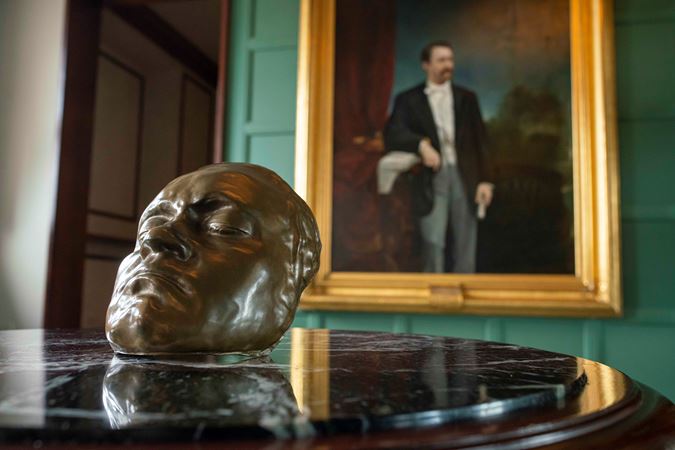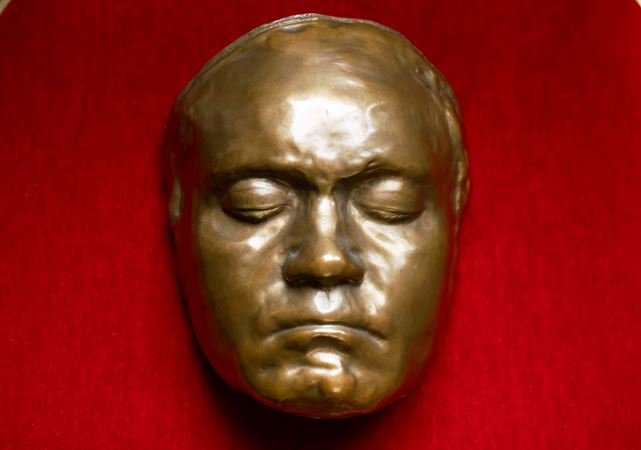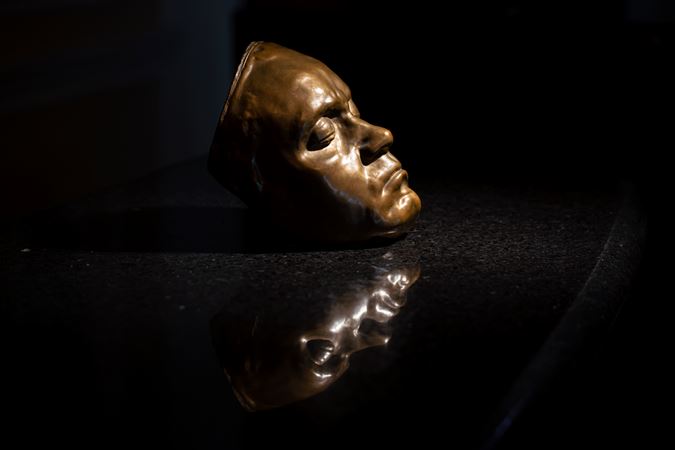To commemorate Ludwig van Beethoven’s 250th birthday, we’re sharing a new video that describes one of the most precious artifacts in the Theodore Thomas collection in the Chicago Symphony Orchestra Association’s Rosenthal Archives — a bronze life mask of one of music’s greatest composers.
Beethoven was the favorite composer of Theodore Thomas, the Chicago Symphony Orchestra’s founder and first music director. Thomas programmed Beethoven’s Fifth Symphony on the Chicago Orchestra’s very first concerts in October 1891 and for the first concert in Orchestra Hall when it opened in December 1904. Among Thomas’s collection, there are four marked scores of Beethoven’s Fifth Symphony, along with this life mask of the composer.
The mask is cast in bronze from an original mold made in 1812 by Franz Klein, a sculptor who had been commissioned by Nannette and Andreas Streicher, Viennese piano makers and good friends of Beethoven.
So, here we are in 1812. Politically, this was a time of huge uncertainty: Napoleon had failed in his invasion of Russia and war was engulfing Europe. Vienna was extremely tense and Beethoven was its most famous citizen, even though the composer was nearly deaf and had stopped performing in public.
By then, he had finished some of his pivotal works: the Emperor piano concerto, the Archduke Trio, and the Seventh and Eighth symphonies. Also, it is believed that he wrote the letters to his “immortal beloved” during the summer of 1812, and he was about to enter into a time of declining health, strained relationships with his family, and intense personal isolation.
So, this mask is the face of a man who was leaving behind the vision that made him the most famous musician alive and a few years later would produce some of the most profound music ever written.
But back to the artifact. For the mold, the technique Klein used involved lubricating the skin with oil, placing a straw in each nostril, and applying a thick liquid plaster over the subject’s entire face. The mold was used to create a bust, and the original remained in the possession of the Streicher family until the early part of the twentieth century, when it was given to the Historical Art Museum of the city of Vienna.
Several copies of the life mask and the sculpture were produced later in the nineteenth century, and this bronze version of the mask in Thomas’s collection is likely one of those copies.
Since Beethoven rarely had the patience to sit for portraits, artists would frequently look to Klein’s sculpture as reference instead. Another mold was taken two days after he died in 1827, of course, a death mask, but this mask remains the most accurate likeness of the composer during his lifetime.
Special thanks to Rachel Aka for video editing and Todd Rosenberg for contemporary photography.






